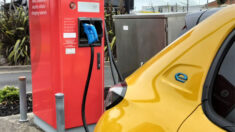
The US Consumer Safety Commission (CPSC) recently issued a serious warning regarding the lithium-ion batteries used in some Rad Power Bikes electric bikes. This news is concerning for users like you because the commission states that these batteries can suddenly catch fire or explode. This article will explain in plain and clear language what happened, who is affected, the risks, and what you can do now.
What the CPSC Warning Says
The CPSC has clarified that some batteries can suddenly catch fire or explode. The commission has recorded 31 incident reports so far. 12 of those incidents resulted in property damage, with a total estimated loss of approximately $734,500. The commission also noted that some fires occurred when the bikes were not charging, and the equipment was in storage. The CPSC states that the risk is particularly increased when the battery or its harness is exposed to water and dirt.
Which Bikes and Batteries Are Affected
Batteries used in several popular Rad models are covered by this warning. Affected models include the RadWagon 4, RadCity HS 4, RadRover High Step 5, RadCity Step Thru 3, RadRover Step Thru 1, RadRunner 2, RadRunner 1, RadRunner Plus, and RadExpand 5. The affected batteries have the battery model number HL-RP-S1304 or RP-1304 on the back or rear label. These batteries were manufactured in China. These batteries are available on Rad’s website, Best Buy, and several independent bike shops.
Reported Damage and Nature of Incidents
The CPSC reported that property damage occurred in 12 of the 31 reported incidents. According to the commission, some fires occurred when the batteries were not in use or in storage, rather than while charging. The Commission has urged consumers to immediately identify their batteries and not use batteries that are subject to the warning.
Rad’s Response and Company Position
Rad Power Bikes has strongly denied the CPSC’s comments. The company maintains that its batteries comply with the highest industry standards and have passed testing by third-party laboratories. Rad also stated that the incidence rate of affected batteries is a fraction of one percent, meaning extremely low. The company offered several solutions to the CPSC, including discounts for customers to upgrade to its new Safe Shield batteries. Rad says the Commission did not accept this option, and due to the Commission’s “all-or-nothing” demand, Rad has stated that the cost of a complete battery replacement could force it to shut down immediately.
The company is also facing ongoing financial challenges. Rad filed a WARN with state regulators, stating that it is at risk of ceasing operations by January 2026 if it does not find new funding or an acquisition. The filing stated that approximately 64 jobs could be affected. This safety alert puts further pressure on the company during this difficult time.
What’s Important to You and What to Do
The steps available to you depend directly on the CPSC’s advice. The CPSC urges consumers to immediately remove affected batteries from their bikes. It is not safe to throw the batteries away or submit them for conventional recycling. The Commission has clarified that lithium-ion batteries should not be placed in household waste or regular recycling bins. Instead, contact your local municipal Household Hazardous Waste (HHW) collection center and ask if they accept these types of batteries. If they do not, seek further instructions from your municipality. The CPSC also states that affected batteries should not be sold or given away.
How You Should Identify a Battery
A simple method of identification is to check the label on the back of the battery. Battery model numbers HL-RP-S1304 or RP-1304 are subject to the warning. Replacement batteries sold at RAD and retailers are estimated to cost approximately $550. When removing a battery, be sure to handle it with extra care and maintain a safe distance due to the potential risk of burns.
Challenges and Future Uncertainty
The situation is complicated because the CPSC and RAD have not reached an agreement. The Commission stated that RAD did not agree to an acceptable recall, while RAD stated that demanding widespread battery replacements would force it to immediately shut down and cut off support for many users and employees. This dispute means that many customers are now in uncertainty. The most important thing for you is to prioritize your safety. Do not underestimate the potential risks associated with batteries, especially if the battery has been exposed to water or dirt or has any visible damage.
This is a time to be vigilant. The CPSC has issued clear warnings, and some incidents involving RAID batteries have already resulted in serious consequences. Check the model number of your appliance’s battery, remove any affected battery from use, and contact your local HHW center to ensure safe disposal. Despite the ongoing dispute between the company and the regulator, your priority should be your safety and that of your home. Don’t ignore the risks and follow appropriate local guidelines to keep you and your family safe.


